This article was published in the newsletter no. 34 (1996)
of GIREP (Groupe International de Recherche sur l'Enseignement de la Physique)
The paper-clip top (Sakai-top)
|
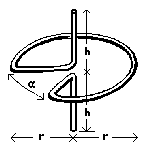
Principal construction
|
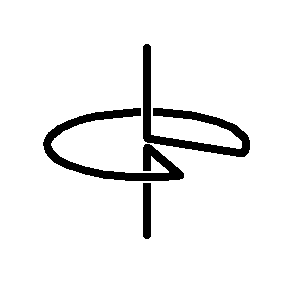 The first Sakai Top
The first Sakai Top
(an unsymmetrical top)
an animation
|

A second Sakai Top
(a symmetrical top)
an animation
|
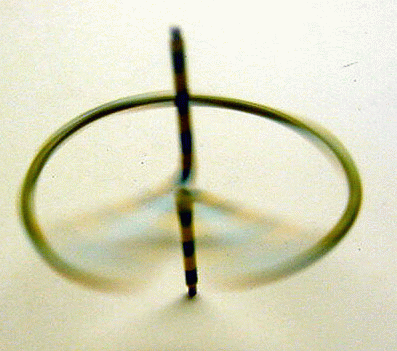
Video of a real Sakai Top
Thanks to Dr. J. Yingprayoon/Thailand
|
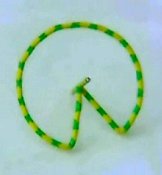
Video of a real Sakai Top
download Sakai_Top.avi
(AVI-file; 3.2MB)
|
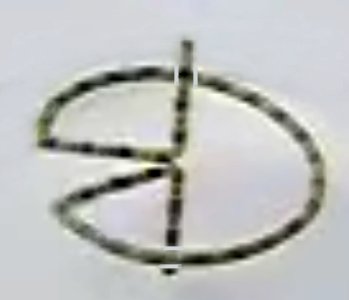
High-speed-video of a Sakai Top
download Sakai1_1000fps.mp4
(mp4-file; 1000fps; 115kB)
|
You can bend a top out of one piece of wire, e.g. a paper-clip.
Takao Sakai, professor of mechanical engineering at the Fukushima Technology
Centre in Kohriyama-City in Japan has proposed an ingeniously simple solution.
His top consists of a sector of a circle, from which the spokes lead to
the shaft (= rotating axis) and in this way hold the arc of the circle.
The spokes form an angle alpha. Both ends of the wire form the shaft
- bent rectangular to the spokes in the center of the circle. The top will
only work properly if the center of gravity of the whole system stays in
the axis. This is exactly the case if tan(alpha/2) = 1/2, with alpha
being the angle between the spokes. It is a nice exercise for physics
students to prove that. The angle alpha = 53.13 degrees. To actually
build the top you need a small pair of pliers and a metal paper-clip. Since
it is not possible to bend the wire sharply, although the angle alpha
was calculated under this condition, you may bend the angle a a little
smaller than 53 degrees. Using regular paper-clips, the height h and the
radius r of the circle are only about 1cm. The Sakai-top runs well even
if the curvature of the circle is not perfect. You can see the circle and
the shaft of a very well made and fast rotating top distinctly, while the
spokes will be almost invisible. If you spin it with your fingers, the
small diameter of the wire will make the top rotate very fast, up to several
thousand r.p.m. Try to calculate roughly the revolutions under your personal
conditions (finger velocity and diameter of the wire) and then to measure
the revolutions per minute with a stroboscope. Be careful not to use all
the paper-clips in your surroundings. A recommendable book by Wolfgang
Bürger (in German) about physics toys and related reflections has
recently appeared: Der paradoxe Eierbecher, Birkhäuser-Verlag, Basel
1995. There you can find some more information about the Sakai-top.
Christian Ucke, Technical University Munich, 85748 Garching,
Germany





